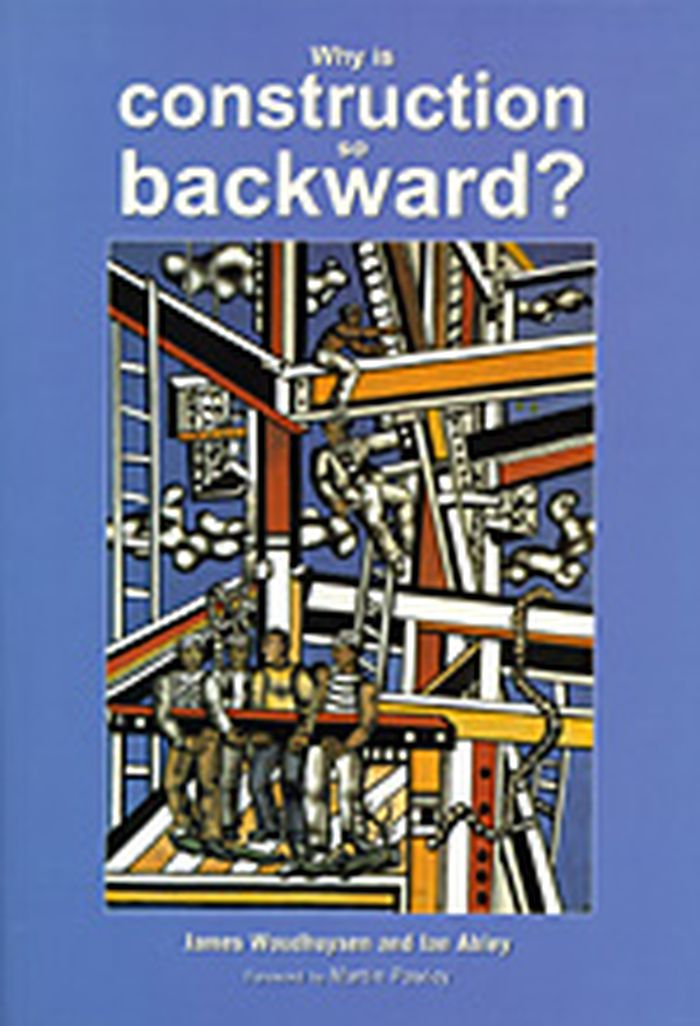$72.99
(disponible sur commande)
Résumé:
Construction has emerged as a mainstream political issue. Yet the building trade is one of the world’s weakest: it is fragmented, barely globalised and behind other sectors in introducing disruptive innovations to its basic processes. The modest worldwide scale of prefabricated building confirms how construction remains a 19th century affair, not a 21st century one.(...)
Théorie de l’architecture
janvier 2004, Chichester
Why is construction so backward?
Actions:
Prix:
$72.99
(disponible sur commande)
Résumé:
Construction has emerged as a mainstream political issue. Yet the building trade is one of the world’s weakest: it is fragmented, barely globalised and behind other sectors in introducing disruptive innovations to its basic processes. The modest worldwide scale of prefabricated building confirms how construction remains a 19th century affair, not a 21st century one. Drawing on the latest technologies that have emerged both inside and outside the sector, "Why is construction so backward?" forms a detailed, practical alternative to the conventional wisdom in building design and urban planning. It is a powerful call for reform, and a sharp attack against architecture as social engineering and environmentalist dogma.
Théorie de l’architecture
livres
$59.95
(disponible sur commande)
Résumé:
In this age of ever-increasing environmental awareness, the issue of sustainability is set to become the dominant factor in architectural design. At a time when, like most professions, architectural practice is increasingly governed by legal guidelines and requirements, competing policy demands require architects to aim for economic, social and environmental(...)
décembre 2001, Chichester
Sustaining architecture in the anti-machine age
Actions:
Prix:
$59.95
(disponible sur commande)
Résumé:
In this age of ever-increasing environmental awareness, the issue of sustainability is set to become the dominant factor in architectural design. At a time when, like most professions, architectural practice is increasingly governed by legal guidelines and requirements, competing policy demands require architects to aim for economic, social and environmental sustainability whilst also trying to effect social progress. "Sustaining Architecture in the Anti-Machine Age" asks whether these two ambitions can be reconciled. Featuring contributions from architects, journalists, academics and legal consultants, the book takes a balanced look at the subject, giving the full range of sometimes opposing views. Examining all the key issues, it considers why the industrial development of town and country is considered unsustainable rather than socially imperative, and whether the aim of raising the level, standard and performance of arhcitectural production conflicts with the promotion of sustainability.
livres
décembre 2001, Chichester
$54.99
(disponible en magasin)
Résumé:
The guest editors, Jonathan Schwinge and Ian Abley of the London based research organisation audacity, call for development on a bold scale. They argue that by rapidly super-sizing the built environment society is not made vulnerable to natural or man-made hazards, and that design innovation surpasses bio-mimicry. Designers can learn from materials scientists working at(...)
AD : manmade modular megastructure
Actions:
Prix:
$54.99
(disponible en magasin)
Résumé:
The guest editors, Jonathan Schwinge and Ian Abley of the London based research organisation audacity, call for development on a bold scale. They argue that by rapidly super-sizing the built environment society is not made vulnerable to natural or man-made hazards, and that design innovation surpasses bio-mimicry. Designers can learn from materials scientists working at the smallest of scales, and from systems manufacturers with ambitions at the largest. This issue calls for creative thinking about typologies and topologies, and considers what that also means for Africa, China, and Russia. Megacities everywhere demand integration of global systems of transport, utilities and IT in gigantic structures, constantly upgraded, scraping both the sky and the ground, outward into the sea.
Structures d’ingénierie

